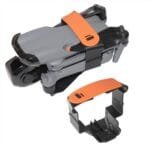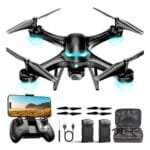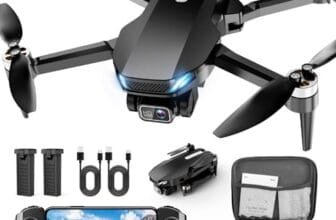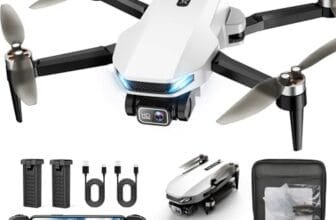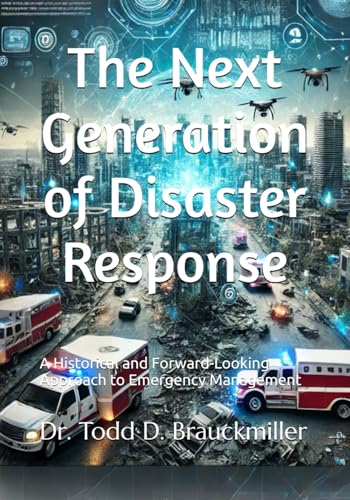
Drones have transformed disaster response. They provide quick, crucial insights in emergencies, enhancing safety and efficiency.
Drones play a vital role in modern emergency management. They offer fast aerial views, crucial in disaster-stricken areas. First responders can assess situations quickly and safely, reducing risks and enhancing rescue efforts. Various resources support this technology. “The Next Generation of Disaster Response” explores historical and future strategies.
“Disaster Response Drone Operator Training Guide” is essential for those new to this field. “Eyes in the Sky” delves into how drones revolutionize emergency responses. Awareness of threats like terrorism and WMDs is crucial, as highlighted in related literature. Personal stories, like “My Time With The Ladies Of Disaster,” provide unique insights into disaster management experiences.
The Next Generation Of Disaster Response: A Historical And Forward-looking Approach To Emergency Management

For professionals in emergency management, disaster response, or public safety, “The Next Generation of Disaster Response” is an essential addition to your library. It is designed for those who are keen on understanding the historical context of disaster management and are looking to adopt a forward-thinking approach to future emergencies. If you are committed to improving community resilience and response strategies, this book is tailored for you.
Pros:
- Comprehensive historical analysis of past disaster responses.
- Insightful forward-looking strategies for emergency management.
- Authored by experts in the field, providing credible insights.
Cons:
- May be too detailed for casual readers.
- Focuses primarily on academic perspectives.
The book features an in-depth exploration of past disaster responses, offering valuable lessons that can be applied to current and future emergency management practices. By examining historical case studies, readers gain insights into what strategies have succeeded and which have not, enabling them to craft more effective response plans.
Additionally, the authors provide a forward-looking approach, suggesting innovative strategies for improving disaster preparedness and response capabilities. These insights are particularly beneficial for agencies and individuals looking to enhance community resilience and adapt to the ever-changing landscape of global emergencies.
To buy this product, click here.
Disaster Response Drone Operator Training Guide

The Disaster Response Drone Operator Training Guide is an essential resource for emergency responders, disaster management professionals, and drone enthusiasts looking to specialize in disaster response operations. This guide is tailored for individuals who wish to become proficient in using drones to effectively manage and assess disaster situations, ensuring they are equipped with the skills and knowledge necessary to operate drones in high-pressure environments.
Pros:
- Comprehensive training material covering all aspects of disaster response drone operations.
- Updated content with the latest techniques and technologies for 2023.
- Compact size, making it easy to carry and reference in the field.
- Expert insights from industry leaders in drone technology and disaster management.
Cons:
- Limited number of pages may not cover advanced topics in depth.
- Requires prior knowledge of basic drone operations for optimal understanding.
The Disaster Response Drone Operator Training Guide is structured to offer a step-by-step approach in mastering drone operations during a disaster. With a focus on practical applications, this guide provides detailed instructions on how to deploy drones effectively to assess damage, locate survivors, and provide real-time data to ground teams. The benefits of this guide extend beyond just learning how to operate drones; it equips users with the strategic insights needed to make critical decisions quickly and effectively during emergencies.
Furthermore, the guide includes case studies and real-world scenarios that illustrate the profound impact drones can have in disaster response. By understanding these applications, users can appreciate the value drones bring to disaster management, enhancing their ability to coordinate efforts and improve response times. The Disaster Response Drone Operator Training Guide ultimately empowers its readers to become leaders in the field, ensuring they are prepared to face any challenge with confidence and expertise.
To buy this product, click here.
Eyes In The Sky: The Revolution Of Drone Technology In Emergency Response

The ideal customer for “Eyes in the Sky: The Revolution of Drone Technology in Emergency Response” is anyone involved in emergency management, search and rescue operations, or disaster response. This book is a crucial resource for professionals and enthusiasts who want to understand the transformative role of drone technology in enhancing emergency services. Whether you are a policymaker, a first responder, or a tech enthusiast interested in the future of emergency response, this book provides insightful perspectives and practical knowledge.
Pros:
- Offers a comprehensive overview of drone technology in emergency response.
- Provides real-world case studies and examples.
- Easy to understand, making it accessible for readers of all backgrounds.
Cons:
- Limited to drone technology, may not cover other aspects of emergency response.
- Being independently published, it may lack the extensive editorial review typical of larger publishers.
The book dives deep into the features of drones, highlighting their role as a game-changer in emergency management. Drones offer the ability to quickly survey disaster-stricken areas, providing critical information without the risk to human life. This feature is particularly beneficial in situations like wildfires or floods, where conditions on the ground can be unpredictable and hazardous. The book explains how drones can be deployed swiftly, offering real-time data to improve decision-making and enhance response times.
Another significant aspect covered is the cost-effectiveness of using drones compared to traditional methods. By reducing the need for extensive ground or air personnel, drones help save resources while increasing the efficiency of operations. The book discusses various case studies where drones have successfully aided in rescue missions, underscoring their potential to revolutionize how emergency services are conducted. These insights empower readers to understand the broader implications of drone technology beyond just the technical aspects, emphasizing their practical benefits and future possibilities.
To buy this product, click here.
Terrorism And Wmds: Awareness And Response

“Terrorism and WMDs: Awareness and Response” is an essential resource for security professionals, emergency responders, and policy makers who are looking to deepen their understanding of terrorism and weapons of mass destruction (WMDs). This comprehensive guide is ideally suited for those who are responsible for public safety, risk management, and the formulation of response strategies in the face of potential threats. It is also valuable for academics and students specializing in security studies and emergency management.
Pros:
- Comprehensive coverage of terrorism and WMD topics.
- Published by a reputable source, CRC Press.
- Latest edition with updated information.
- Detailed insights into response strategies.
Cons:
- Weight may be cumbersome for frequent travelers.
- Highly specialized content may not be suitable for general readers.
The book features a substantial 458 pages that delve into the complexities of terrorism and WMDs, offering readers a thorough understanding of the subject. Each chapter is meticulously crafted to provide real-world scenarios and case studies, enabling professionals to apply theoretical knowledge to practical situations. The depth of information makes it a vital tool for preparing strategic response plans and understanding the nuances of modern threats.
One of the standout features of this book is its emphasis on response mechanisms. It guides readers through the development of effective response strategies, ensuring they are equipped to handle emergencies with confidence and precision. The third edition includes the latest research and methodologies, making it an up-to-date reference for those needing cutting-edge insights. Additionally, the book’s dimensions and format make it a sturdy resource, designed to withstand frequent use in the field or classroom.
To buy this product, click here.
My Time With The Ladies Of Disaster: First Edition

“My Time With The Ladies Of Disaster: First Edition” is the perfect choice for literature enthusiasts who appreciate unique storytelling and independent publications. This book is ideal for those who seek to explore diverse narratives and enjoy collectible editions that offer a fresh perspective.
Pros:
- Independently published, ensuring a unique voice and creative freedom.
- Compact size makes it easy to carry and read on the go.
- First Edition appeal for collectors and book lovers.
Cons:
- Limited number of pages might not satisfy those looking for a long read.
- Being independently published, it might have limited availability in some areas.
The dimensions of “My Time With The Ladies Of Disaster: First Edition” are designed for portability and ease of use. With a height of 11.0 inches and length of 8.5 inches, it fits comfortably in most bags, making it an excellent companion for travel or daily commutes. The lightweight nature of the book, weighing only 0.54895103238 pounds, ensures that readers can enjoy it without feeling burdened.
This book’s publication date of 2024-11-18 promises fresh content and a modern take on storytelling, appealing to readers who are looking for current literature. The 69 pages are packed with engaging narratives and thought-provoking themes, making each page an experience rather than just a read. The independent publication status highlights the author’s dedication to originality and provides a platform for voices that might not be found in mainstream literature.
To buy this product, click here.
Frequently Asked Questions
What Role Do Drones Play In Disaster Response?
Drones provide crucial aerial surveillance, delivering real-time data during disasters. Their rapid deployment enhances situational awareness, aiding emergency responders in assessing damage and prioritizing resources efficiently. Equipped with cameras and sensors, drones can navigate hazardous areas, helping in search and rescue operations and delivering vital supplies to inaccessible locations.
How Can Drone Operators Be Trained For Emergencies?
Drone operators can undergo specialized training programs focused on disaster response. These courses cover flight techniques, emergency protocols, and equipment handling. Hands-on simulations provide practical experience, ensuring operators can efficiently deploy drones during crises. Training emphasizes safety, regulatory compliance, and effective communication with emergency teams to optimize disaster management efforts.
How Have Drones Revolutionized Emergency Response?
Drones have transformed emergency response by offering rapid, cost-effective aerial assessments. They capture real-time images and data, improving decision-making and resource allocation. Their ability to access remote or dangerous areas enhances search and rescue missions. Drones also facilitate communication and coordination among emergency teams, greatly increasing operational efficiency.
What Are The Challenges In Using Drones For Disaster Management?
Challenges include regulatory hurdles, technical limitations, and environmental factors. Operators must comply with strict aviation rules and ensure drones function in adverse conditions. Battery life and payload capacity can restrict operations. Effective integration of drone data with existing systems is crucial for seamless disaster management, requiring skilled personnel and robust infrastructure.
How Do Drones Assist In Terrorism Response?
Drones assist in terrorism response by monitoring affected areas and gathering intelligence. They help identify threats, assess damage, and coordinate emergency actions. Equipped with advanced sensors, drones can detect hazardous materials, aiding in quick response to chemical, biological, or radiological incidents, thus supporting public safety and counter-terrorism efforts efficiently.
Conclusion
Drones are proving to be vital tools in disaster response. They offer a unique perspective that helps save lives. From tracking wildfires to assessing flood damage, drones enhance emergency management. Their ability to quickly gather data is unmatched. However, the right drone and skilled operator are essential for effective deployment.
Training guides are crucial for operators to understand drone technology. They teach how to use drones safely and effectively in emergencies. Awareness of threats like terrorism and wmds is also important. Drones can play a role in monitoring these threats.
Historical and forward-looking approaches ensure we are prepared for future challenges. Books like “my time with the ladies of disaster” offer valuable insights. They highlight the importance of teamwork in disaster scenarios. As drone technology evolves, it will continue to impact disaster response positively.
Choosing the right drone can make a difference in saving lives and enhancing safety.
